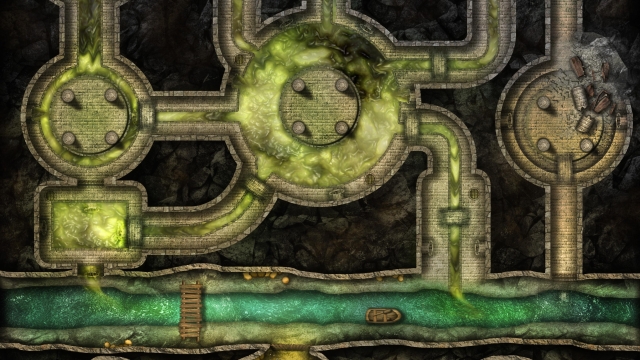Maintaining a smooth-running plumbing and septic system is essential for any home or property owner. From leaky faucets and clogged drains to septic tank issues, the world of plumbing can often be overwhelming. But fear not! In this comprehensive guide, we will provide you with expert tips and advice to help you tackle common plumbing and septic system problems with ease.
Plumbing issues can arise when we least expect them, causing inconvenience and frustration. From burst pipes to dripping faucets, these problems can lead to water wastage and even structural damage if left unattended. Additionally, septic system problems can disrupt the proper functioning of your household wastewater disposal, potentially causing health hazards and unpleasant odors.
However, by understanding the common issues that arise in plumbing and septic systems, you can equip yourself with the necessary knowledge to effectively address and prevent them. Whether you’re a seasoned DIY enthusiast or simply looking to gain a better understanding of these systems, this guide will provide you with the insights you need to flush out any plumbing and septic system issues that come your way. So let’s dive in and empower ourselves with the knowledge to keep our plumbing and septic systems in top shape!
Common Plumbing Issues
Leaky Faucets: One of the most common plumbing issues that homeowners face is a leaky faucet. This can not only be annoying with the constant drip-drip sound, but it can also waste a significant amount of water over time. Leaky faucets are often caused by worn-out washers or seals, which can easily be replaced to solve the problem.
Clogged Drains: Whether it’s a kitchen sink, bathroom sink, or shower drain, clogs can be a major inconvenience. They are usually caused by a buildup of hair, soap scum, food particles, or other debris. Using a plunger, drain snake, or chemical drain cleaner can often unclog the drain and restore proper flow.
Running Toilets: Another common plumbing issue is a running toilet. This occurs when water from the tank continuously flows into the bowl, even when the toilet is not in use. It can waste a significant amount of water and increase your water bill. The most common cause is a faulty flapper valve, which can easily be replaced to fix the problem.
Plumbing Repair
Remember, it’s important to address these common plumbing issues promptly to prevent further damage and avoid costly repairs. Regular maintenance and occasional inspections can help identify and resolve these issues before they escalate.
Common Septic System Issues
- Routine Maintenance Neglect:
One common issue with septic systems is the neglect of routine maintenance. Many homeowners tend to overlook the importance of regular inspections and pumping of their septic tanks. Over time, this can lead to an accumulation of solid waste and sludge in the tank, which may eventually cause blockages and backups within the system. Therefore, it is crucial to adhere to a proper maintenance schedule to prevent potential problems.
- Drainfield Failure:
Another common issue that arises with septic systems is drainfield failure. The drainfield is an essential component of the system that helps to filter and disperse treated wastewater into the soil. However, if the drainfield becomes clogged or overloaded with solids, it can no longer effectively absorb and treat the wastewater. This can result in the surfacing of sewage on your property, foul odors, or even contamination of nearby water sources. Regular septic inspections can help identify any signs of drainfield issues before they escalate.
- Tree Root Intrusion:

Tree roots seeking moisture and nutrients can sometimes invade septic systems, causing damage and disruption. As trees grow, their roots can penetrate pipes and other components of the septic system, leading to blockages or even structural damage. Signs of tree root intrusion may include slow drains, gurgling sounds, or sewage backups. If not addressed promptly, tree root invasion can lead to costly repairs or total system failure.
Remember, proper maintenance, regular inspections, and addressing issues promptly are crucial for the longevity and efficient functioning of septic systems. By staying proactive, you can reduce the chances of encountering these common septic system problems and ensure a smoothly running plumbing and septic system for your home.
Preventive Maintenance Tips
Regular maintenance is crucial to keep your plumbing and septic system running smoothly. By following these preventive maintenance tips, you can avoid common issues and ensure the longevity of your plumbing and septic system.
Watch what goes down the drain: Avoid flushing anything other than toilet paper down your toilets, as items like wipes, feminine hygiene products, and cotton balls can clog the pipes and lead to costly plumbing repairs. Similarly, be mindful of what you put down the kitchen sink. Grease and food scraps should be disposed of properly, as they can cause blockages and affect the efficiency of your septic system.
Schedule routine inspections: Regular inspections by a professional plumber can help identify potential problems before they turn into major issues. A plumber can check for leaks, signs of corrosion, and other plumbing problems that may be hidden from plain sight. Additionally, scheduling septic system inspections can detect any signs of damage or malfunction early on, preventing future inconveniences and costly repairs.
Practice water conservation: Conserving water not only benefits the environment but can also reduce the strain on your plumbing and septic system. Install water-efficient fixtures, such as low-flow toilets and showerheads, to minimize water usage. Additionally, fixing any leaks promptly can prevent water wastage and ensure that your plumbing system remains in good working condition.
By implementing these preventive maintenance tips, you can keep your plumbing and septic system functioning optimally and avoid the hassle of unexpected repairs. Remember, a little attention and care go a long way when it comes to the longevity and efficiency of your plumbing and septic system.
